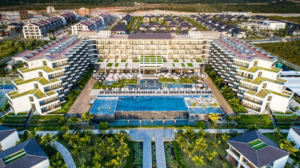Panama Canal,International marine trade had to travel a long and deadly passage around Cape Horn, the southernmost tip of South America, when the Panama Canal became opened.Ships have to cover another this trip takes place between 8,000 and 13,000 distances from the Atlantic to the Pacific.
- The Horn was covered by a rough organ.
- Voyages took weeks or months longer.
- Shipwrecks were common due to unpredictable weather.
- Trade between the west coast of Asia and the east coast of the Americas was sluggish and costly..
This problem affected not just the shipping industry but also economies around the world. Moving goods from one side of the world to the other was inefficient and costly.
Let’s consider this real scenario

In the 1800s, a cargo ship from New York to San Francisco would travel around South America, a journey of over 21,000 kilometres, taking up to 6 months.
Now imagine what that delay meant for countries relying on imports, exporters waiting for their payments, or military fleets needing rapid deployment.
Clearly, the world needed a faster, safer route.
The Toll of Inefficiency
It wasn’t just about the long journey. The lack of a direct route between the two oceans had deeper impacts:
- Economic strain: Nations had to spend more on shipping, raising the prices of goods.
- Maritime bottlenecks: Only ships with sufficient range and resources could handle the journey.
- Military disadvantage: Naval fleets couldn’t be relocated quickly during global conflicts.
- Environmental risk: Longer voyages meant more fuel burned and greater pollution.
Now, let’s take a closer look at how critical the problem became during key historical moments.
Gold Rush Era (1849)

Thousands of Americans rushed to California when gold was found there. But the overland road showed dangerous and slow. Many choose to spend five to eight months at sea circumnavigating Cape Horn. Some even made the decision to walk across the Panamanian Isthmus before boarding another ship on the Pacific side.
There was an increasing need for a better solution.
Strategic Military Concern
In 1898, during the Spanish-American War, the U.S. battleship USS Oregon had to travel from San Francisco to the Caribbean. The trip took 67 days—clearly too slow in wartime. That one journey pushed American policymakers to act fast.
Enter: The Panama Canal

After decades of controversy, failure and international negotiations, the Panama Canal was the answer.
Let’s take a simple approach to dissecting it.
What is the Panama Canal?
- 82-kilometer-long manmade river in Panama.
- The Caribbean Sea acts as a vibrant link between the Atlantic and Pacific Oceans.
- The Panama Canal Authority has been responsible for it since 1999.
- On August 15, 1914, it opened.
The canal gives ships a shorter, safer, and faster route, which significantly cuts down on travel time.
Important Canal Features

To lift and lower ships across difficult terrain, use a system of locks.
Eight to ten hours are taken to travel from one ocean to another.
Depending on size and load, the average cost per ship might vary from $150,000 to $450,000.
A Few Important Points:
- To specify the largest ships that could fit through the original locks, the Panamax size standard was developed.
- New locks were added in 2016 as part of a significant expansion to handle New Panamax (Neo-Panamax) ships, which can reach lengths of 366 meters and widths of 49 meters.
A Bit of History: From Failure to Triumph

French Beginnings (1881)
- Behind the first campaign was Ferdinand de Lesseps, the person who planned the Suez Canal. But in Panama, he met a perfect storm of disease, disarray, and engineering disasters.
- Outcome? Yellow fever and malaria were responsible for the deaths of over 20,000 workers.
- In 1889, the business filed for bankruptcy.
U.S. Takes Over (1904)
- After Panama gained independence from Colombia (with U.S. support), the U.S. took control of the project.
- Better medical techniques and technology were used when work resumed under President Theodore Roosevelt’s direction.
- Dr. William Gorgas introduced mosquito control methods to tackle diseases.
- The U.S. completed the project in 1914.
Real-World Impact: Case Studies and Data

- International Commerce and the Global Economy
- Between 12,000 and 14,000 ships chart a course through the Panama Canal every year, making it one of the busiest trade routes on the planet.
- Around 330 million tons of freight are handled by it every month.
- The canal spans more than 160 countries and more than 140 nautical miles.
- For instance, using the Panama Canal instead of circumnavigating South America. A container ship sailing from Shanghai to New York saves virtually twelve days.
- Energy Shipping
- Large volumes of liquefied natural gas (LNG) are exported from the United States via the canal.
- In 2022, about 90% of U.S.The canal route was used for LNG shipments to Asia.
- Revenue Generation for Panama
- About $3 billion is produced monthly by the canal.
- It contributes about 6% of Panama’s GDP.
- More than 10,000 Panamanians are directly employed by the canal authority.
- The Expansion Project: Why It Mattered
Problem:

Potential revenue decreased because the old locks could not handle the largest ships, also known as Post-Panamax.
Solution:
Panama launched a $5.25 billion extension project in June 2016 to boost the canal’s capacity.
- Added two new lock complexes.
- Increased depth and width of navigation channels.
- Now accommodates LNG carriers, cruise ships, and mega container vessels.
Result:
- Tonnage capacity jumped by more than 50%.
- Boosted Panama’s strategic importance.
- Gave shippers more routing options between Asia and the Americas.
- Environmental Concerns: An Ongoing Challenge
Even a great project comes with problems.

Water Usage
- To make it over the locks, more than fifty billion gallons of fresh water will be required.
- Drinking water from the rain-fed Gatun Lake is considered vital to the Panamanian people.
In 2023–2024, drought conditions led to:
- Reduction in daily ship passages (from 38 to 24).
- Delays and longer waiting times for vessels.
- Potential ripple effects in global supply chains.
The Panama Canal Today: Critical Stats
- Daily ship capacity: Normally 35–40, but varies with water availability.
- Transit time: Average of 8–10 hours, but waiting times can be days during congestion.
- Revenue (2023): Over $4 billion.
- Leading the pack in canal: Traffic are global trade giants like South Korea, China, Japan, Chile and the United States.
- Most of the stuff that goes: Where includes crude oil, LNG, coal, grains, and containers.
Lessons Learned from the Panama Canal

Strategic Infrastructure Pays Off
- Building the canal was costly and dangerous, but it continues to deliver massive economic value over a century later.
Technology and Health Matter
- The success came only after solving engineering and disease problems with smart leadership and innovation.
Adaptability is Key
- The 2016 expansion shows how adjusting to changing trade demands is critical to long-term relevance.
Water Management is Essential
- Even high-tech infrastructure is vulnerable to climate and resource limitations.
Looking Ahead: What Lies Beyond for the Panama Canal

The growth of international trade still depends heavily on the Panama Canal. But it is under more stress from:
- The Suez Canal connects Europe and Asia.
- The Northern Sea Route opened up as a result of the Arctic ice melting.
- Potential new routes through Central America.
But there is no comparison to the Panama Canal’s legacy as a representation of the interconnection of world trade.
Its success is a testament to:
- Bold vision.
- International cooperation.
- Adaptation to modern needs.
Quick Recap in Bullet Points
- The canal allows ships to save up to 13,000 miles on each trip.
- Around 14,000 ships use it every year.
- Generates over $4 billion in revenue.
Expansion in 2016 doubled its capacity.
Water shortages due to climate change remain a big concern.
If you’re ever in Panama, a visit to the Miraflores Locks visitor centre will show you this incredible machine in action.
The Panama Canal isn’t just a passageway—it’s a living example of what problem-solving, innovation and determination can accomplish.




